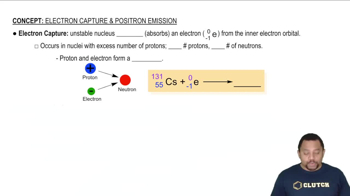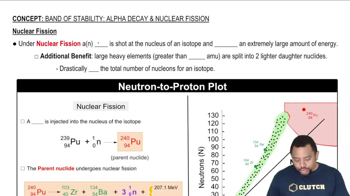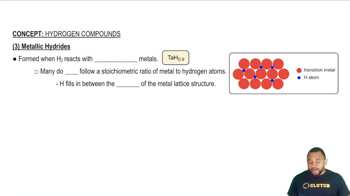Here are the essential concepts you must grasp in order to answer the question correctly.
Electron Capture
Electron capture is a type of radioactive decay in which an atomic nucleus captures an inner-shell electron, typically from the K-shell. This process results in the conversion of a proton into a neutron, leading to a decrease in atomic number while the mass number remains unchanged. It is a common decay mode for proton-rich isotopes, allowing them to achieve a more stable configuration.
Recommended video:
Nuclear Stability
Nuclear stability refers to the ability of a nucleus to remain intact without undergoing radioactive decay. Factors influencing stability include the ratio of neutrons to protons, the presence of magic numbers of nucleons, and the overall binding energy of the nucleus. Unstable nuclei tend to undergo decay processes, such as beta decay or electron capture, to reach a more stable state.
Recommended video:
Band of Stability: Nuclear Fission
Tantalum-179
Tantalum-179 is a specific isotope of tantalum, which has an atomic number of 73. It is produced through the decay of other isotopes, such as tungsten-179, via electron capture. Understanding the decay pathways and the parent isotopes that lead to the formation of tantalum-179 is essential for predicting its occurrence and behavior in nuclear reactions.
Recommended video:

 Verified step by step guidance
Verified step by step guidance


